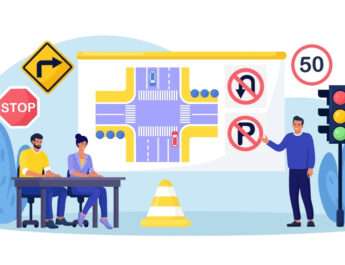In the rapidly growing ecosystem of web development, staying abreast of the curve is vital for success. As technologies improve and user expectations rise, developers need to embrace comprehensive training programs that empower them with the skills to explore the complex world of full-stack development. One such program acquiring popularity is Java full-stack training which provides a holistic strategy for web development, equipping developers to build dynamic, robust, and scalable applications.
As per popular Java Full Stack Training in Noida or elsewhere, full stack development has emerged as a bedrock of contemporary web development, allowing developers to work seamlessly across both the front-end and back-end of applications. Java, a versatile and widely used programming language, has become a top choice for full-stack development due to its scalability, portability, and extensive ecosystem. In the following blog, we’ll navigate the intricacies of Java full-stack training and how it’s reshaping the future of web development.
Understanding Java Full Stack Training
Java full-stack training is not just about excelling in Java; it boasts a comprehensive set of skills that equip developers to craft end-to-end solutions. The training usually boasts a range of technologies and tools, including:
Front-End Technologies:
- HTML5, CSS3, and JavaScript – With top-notch Web Development Training in Noida or elsewhere, developers grasp a solid knowledge of the fundamental technologies to build responsive and interactive user interfaces.
- React, Angular, or Vue.js – Learning popular front-end frameworks is vital to building dynamic and engaging user experiences. Java developers are empowered with the necessary skills for integrating the frameworks seamlessly.
Back-End Technologies:
- Java EE (Enterprise Edition): Developers dive into Java EE to understand the ways of building robust and scalable server-side applications. This involves working with servlets, JSP (JavaServer Pages), and other Java EE components.
- Spring Framework: A vital part of Java Full Stack training, the Spring Framework allows for the development of enterprise-level applications. Developers gain knowledge about Spring Boot, Spring MVC, and other components for developing effective back-end systems.
Database Management:
- SQL and NoSQL Databases: Java Full Stack developers gain knowledge about interacting with databases using SQL for relational databases and NoSQL solutions such as MongoDB for flexible and scalable data storage.
DevOps and Cloud Integration:
- Docker and Kubernetes: Understanding containerization and orchestration is vital for deploying and handling applications effectively.
- Cloud Services (AWS, Azure, or Google Cloud): Integration with cloud platforms is covered to allow developers to deploy applications globally, guaranteeing scalability and reliability.
Unveiling The Benefits of Java Full Stack Training
The various benefits of pursuing a Java Full Stack training program are as follows:
- Versatility and Employability: Java Full Stack developers are empowered to manage both client-side and server-side development, making them versatile assets for businesses. Their ability to work on end-to-end solutions improves employability in a competitive job market.
- Scalability and Performance: Java’s scalability integrated with the comprehensive training in the full stack permits developers to build high-performance applications capable of managing increased user loads and complex functionalities.
- Adaptability to Industry Trends: Regular updates in the Java landscape and the inclusion of modern front-end frameworks guarantee that Java Full Stack developers stay ahead of industry trends, making them adaptable to the evolving technological ecosystem.
- Competitive Edge in the Job Market: As businesses actively demand developers with diverse skill sets, Java Full Stack developers stand out in the competitive job market. Their ability to contribute to different aspects of the development process makes them indispensable assets to companies looking for effective and adaptable team members.
- Effective Collaboration: Full-stack developers trained in Java can easily collaborate with both front-end and back-end teams. This simplified communication and understanding of the complete development process contributes to more effective teamwork, minimizing bottlenecks and accelerating project timelines.
- Global Deployment with Cloud Integration: Java Full Stack training encompasses vital skills in cloud integration, allowing developers to deploy applications globally. Understanding cloud platforms such as AWS, Azure, or Google Cloud is vital for guaranteeing scalability, reliability, and accessibility on a global scale.
Continuous Professional Growth:
The learning journey doesn’t come to an end with Java Full Stack training. Developers are constantly encouraged to embrace a mindset of continuous learning, staying abreast with the latest developments in Java and related technologies. This dedication to growth guarantees long-term success in the dynamic field of web development.
Wrapping Up!
In conclusion, for developers hoping to succeed in the fast-paced field of web development, Java Full Stack Training is a wise investment. Developers may create scalable and reliable apps by learning a wide range of technologies, including cloud integration, back-end systems, and front-end frameworks. Therefore, taking advantage of Java Full Stack Training is not only a means of becoming proficient but also of influencing the direction that web development will take as the need for full-stack engineers grows.
So, what are you waiting for? Master your web development skills with the best Java Full Stack training now and take your career to the next level!


